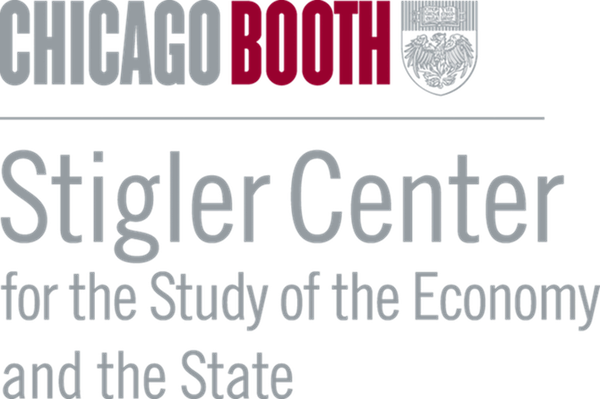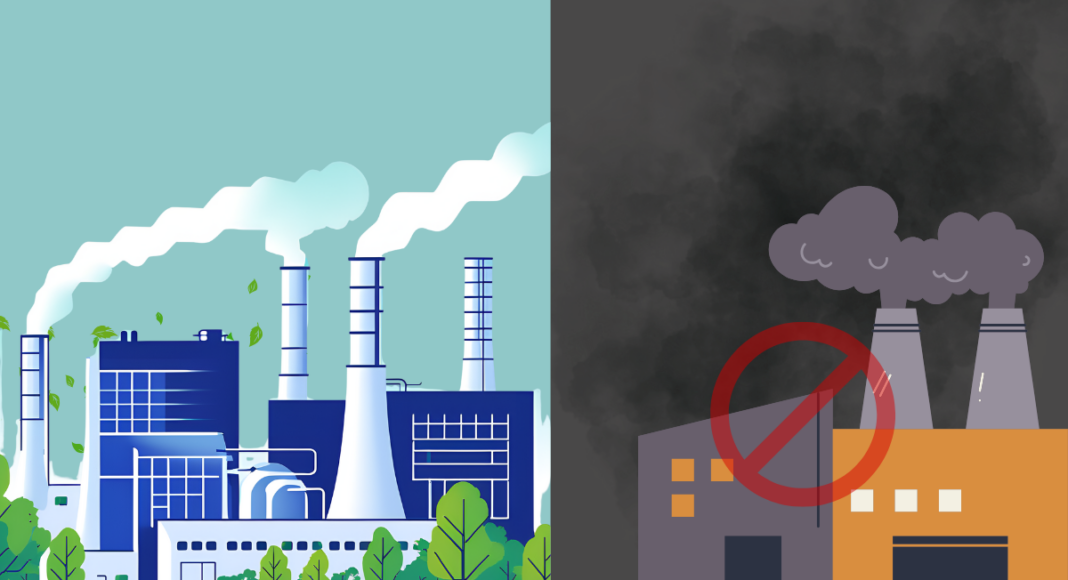Karthik Ramanna writes that if the United States adopts a trade policy based on a dynamic emissions accounting method, it can achieve President Donald Trump’s goal of leveling the manufacturing playing field for American companies by penalizing foreign “dirty” producers, while also mitigating inflation and the risk of a trade war.
At three recent cabinet confirmation hearings before the United States Senate, the discussions focused on restoring a level playing field for American manufacturing. Reinvigorating American industry is a bipartisan national-security priority: The first Trump administration pursued tariffs and trade reform, and the Biden administration unleashed a series of industrial policy bills to incentivize reindustrialization. The second Trump administration is pursuing policies to stop the dumping of low-cost, low-quality imports in American markets that puts domestic manufacturers at a substantial competitive disadvantage.
The senators’ challenge to the cabinet appointees—Scott Bessent for the Treasury Department, Doug Burgum for Department of the Interior, and Chris Wright for the Department of Energy—was how to deliver on this trade fairness without triggering inflation. Equally important is to avoid a major trade war. The last time the U.S. imposed substantial tariffs on an economically advanced county was Japan in the 1930s, and that catalyzed a devastating physical war.
The kernel of the solution to this challenge started to emerge at those hearings. Senators Bill Cassidy of Louisiana and Lindsey Graham of South Carolina, both Republicans, emphasized leveraging the differences between U.S. manufacturing emissions and those of its competitors. American manufacturers generally rely on cleaner energy sources and production methods than overseas competitors. Cassidy highlighted the draft Foreign Pollution Fee Act (FPFA), which if passed would impose a fee on “certain products imported into the United States based on the pollution intensity associated with [their] production.”
All three appointees recognized the value of such an approach, with Bessent describing the FPFA as “a very interesting idea” and Wright acknowledging the Department of Energy’s pilot projects to this end.
At the crudest level, the intent behind the FPFA can be accomplished by a wholesale tariff on select product imports from a given country, say steel from China, based on top-down approximations of China’s substantial emissions from steel production. (For instance, this top-down tariff can be assessed by estimating total emissions across China’s steel mills from the carbon content of their energy sources like coal and then dividing this number by China’s total steel production.) But this would be problematic for two reasons. First, it would likely violate America’s World Trade Organization commitments, prompting a dangerous escalation from China. Second, it would likely prompt rapid and devastating inflation domestically.
So, we need a more nuanced approach to make the FPFA work. That solution comes from recent advances in the area of product-level emissions accounting.
This “cradle-to-gate” approach uses principles from cost accounting to calculate the specific emissions associated with a product’s supply chain. Rather than use top-down estimates, this approach uses actual field- and facility-level emissions data based on direct monitoring of all material sites of emissions in the supply chain, from development (cradle) to delivery (gate). This means aggregating the relevant share of emissions from mining and farming raw materials used in the product, to manufacturing-related emissions, through to emissions incurred from transporting the product to the customer.
The methodology of product-level emissions accounting is similar to that of modern financial accounting, which already enables companies to measure in near-real-time their products’ monetary costs at the batch level. And, a number of pioneering companies in the cement, steel, energy, and services sectors have now piloted product-level emissions accounting.
The time-based specificity of product-level emissions accounting can be the “killer app” for restoring a level playing field for U.S. manufacturing without triggering a trade war or major inflation. Here’s why.
If tariffs are not specific to a manufacturer and its product, they will likely violate WTO agreements. For instance, a wholesale tariff on all steel from China would be seen as discriminatory, counter to the spirit of free trade. Such a tariff could also signal America abandoning its commitment to over a half-century of free-market policy. It could prompt retaliation not just from China but from allies in Europe, Japan, and elsewhere.
But a tariff that is specific to a given bar of steel, based on its incurred cradle-to-gate emissions and regardless of its country of origin, is fair game under WTO agreements that allow for local policies that protect human and environmental wellbeing.
So, for instance, Trump’s proposed External Revenue Service, an agency that would collect tariffs and duties from foreign sources, could use product-level emissions accounting to calculate what are the average emissions for bars of steel made domestically during a given month. The agency would use that average to establish a monthly emissions threshold and then collect tariffs on imported steel bars with embedded emissions above that threshold. This would moderate the inflow of low-cost “dirty” products flooding the market and help level the playing field for American manufacturers.
This approach would of course require the U.S. to audit the emissions numbers supplied by overseas manufacturers. But since product-level emissions accounting is substantively similar to financial accounting, hundreds of thousands of U.S.-trained auditors are already familiar with the underlying methodology. Besides, the U.S. has existing agreements in place to “audit the auditors” in most overseas jurisdictions, including China.
The dynamic product-based approach to tariffs has the additional advantage of creating incentives for continuous improvement, thus curtailing inflationary forces. A wholesale tariff against Chinese steel, because it is currently lower cost, will raise prices domestically and, more importantly, can make U.S. manufacturers “fat and happy.” These manufacturers will experience an increased market share and will not have to compete or innovate to keep it. This is dangerous to American long-run economic security.
By making the tariff dynamic—i.e., based on a product category’s average monthly domestic emissions in the U.S.—poorly performing companies in that category are encouraged to improve their game. In fact, all manufacturers, whether currently high- or low-emissions, must continually improve to benefit from, or avoid being hurt by, the tariff. There is no free lunch. The competitive nature of the game sparks innovation, including to keep costs down.
Some might worry that with this dynamic tariff, Chinese manufacturers will eventually outcompete U.S. manufacturers on emissions (in addition to their current cost advantage). That is possible, but history suggests otherwise: over the long run, American entrepreneurialism has broadly thrived in a fair fight.
The essential goal of Trump’s tariff policy does not appear to be indefinite protectionism but, rather, eliminating unfair advantages in world trade. By embracing product-level emissions-based tariffs, the U.S. can advance a trade policy that puts domestic manufacturing on a fair footing globally, without sacrificing economic stability or longstanding diplomatic relationships.
Disclosure: Karthik Ramanna is professor of business and public policy at University of Oxford’s Blavatnik School of Government, author of “The Age of Outrage: How to Lead in a Polarized World,” and principal investigator of the E-liability Institute, a global not-for-profit advancing rigorous accounting for energy competitiveness.
Articles represent the opinions of their writers, not necessarily those of the University of Chicago, the Booth School of Business, or its faculty.







